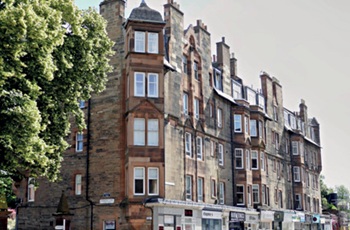Splashback
Contents |
[edit] Introduction
A splashback is a panel of material is used in spaces such as kitchens and bathrooms to protect walls and other surfaces from splashes. In kitchens, they are often placed behind the hob, protecting the wall from splashes caused by cooking as well as from heat damage. In bathrooms, they are often placed behind sinks and around bathtubs to prevent mould and mildew developing as a result of damp from spilt, sprayed or splashed water.
Splashbacks can be creatively designed to enhance or complement the room interior and can be made from a variety of materials.
[edit] Materials
[edit] Stainless steel
This is a sheet of flat steel fixed directly to the wall using glue or screws. This option is relatively affordable and easy-to-clean, while being heat-resistant and durable, although it will develop minor scratches over time.
[edit] Porcelain and ceramic tiles
Tiles are a popular option for splashbacks as they are scratch-, heat-, and water-resistant, and can be easier to clean than some other materials. They also have the advantages of being relatively affordable and easily installed, with an abundance of choice which encourages creativity. However, if a tile becomes chipped or damaged it will need to be removed and replaced, and the type and colour of grout to be used should be carefully considered. Grout will eventually need to be replaced to ensure continued moisture resistance and to recreate the original colour.
[edit] Glass
Glass is commonly used to add colour and a sleek aesthetic, and can be fitted in a large, seamless panel. Glass splashbacks are fixed to the wall using silicone or screws, and cut-outs can be included to accommodate fittings such as light switches and electric sockets. Tempered glass is stronger and more durable than ordinary glass and offers more scratch-resistance.
Mirrored glass can be chosen for a more look. Panels of up to 3 m in length are available, which reduces the need for joins. A drawback of mirrored glass is that is cannot be used behind a gas hob as cracks may form over time as a result of continuous expansion and contraction.
[edit] Engineered stone
This is typically manufactured from crushed quartz and resin, and is very tough and high-performing. Engineered stone will not stain, is easily cleaned and can be made in a wide range of colours. Like glass, it can be supplied in large panels, reducing the need for joins. However, this is a more expensive material to use and very often requires specialists to install it.
[edit] Granite
Granite is commonly used in more traditional settings, and every piece of stone will look different in some way. Granite is easy-to-clean and very durable, although it is an expensive option and requires sealing to prevent staining as it is porous.
[edit] Polished plaster
Polished plaster is highly versatile in terms of aesthetics, as it can be specified in any colour or texture. It requires very little maintenance once it’s been installed, although it may be prone to chipping which cannot be seamlessly repaired. As a precautionary measure, it is often recommended that small skirting is provided around the worktop edge to protect against damage.
[edit] Composites
Also known as solid surface materials, composites are typically made from a blend of one-third resin and two-thirds natural mineral. They are highly flexible and can be used to provide streamlined curves that require no joints between worktop and splashback. However, some varieties are prone to scratching and lack heat-resistance.
[edit] Laminate
Laminate is a more affordable alternative, and is hard-wearing and easy-to-clean. It should not be used behind a gas hob because of its flammability and needs to be carefully installed to prevent water ingress at joints.
[edit] Marble
While providing a luxurious aesthetic to a room, with lots of variety, marble is porous and so must be sealed and resealed to prevent staining. It also lacks scratch-resistance.
[edit] Related articles on Designing Buildings Wiki
Featured articles and news
The history of building regulations
A story of belated action in response to crisis.
Moisture, fire safety and emerging trends in living walls
How wet is your wall?
Current policy explained and newly published consultation by the UK and Welsh Governments.
British architecture 1919–39. Book review.
Conservation of listed prefabs in Moseley.
Energy industry calls for urgent reform.
Heritage staff wellbeing at work survey.
A five minute introduction.
50th Golden anniversary ECA Edmundson apprentice award
Showcasing the very best electrotechnical and engineering services for half a century.
Welsh government consults on HRBs and reg changes
Seeking feedback on a new regulatory regime and a broad range of issues.
CIOB Client Guide (2nd edition) March 2025
Free download covering statutory dutyholder roles under the Building Safety Act and much more.
AI and automation in 3D modelling and spatial design
Can almost half of design development tasks be automated?
Minister quizzed, as responsibility transfers to MHCLG and BSR publishes new building control guidance.
UK environmental regulations reform 2025
Amid wider new approaches to ensure regulators and regulation support growth.
The maintenance challenge of tenements.
BSRIA Statutory Compliance Inspection Checklist
BG80/2025 now significantly updated to include requirements related to important changes in legislation.























